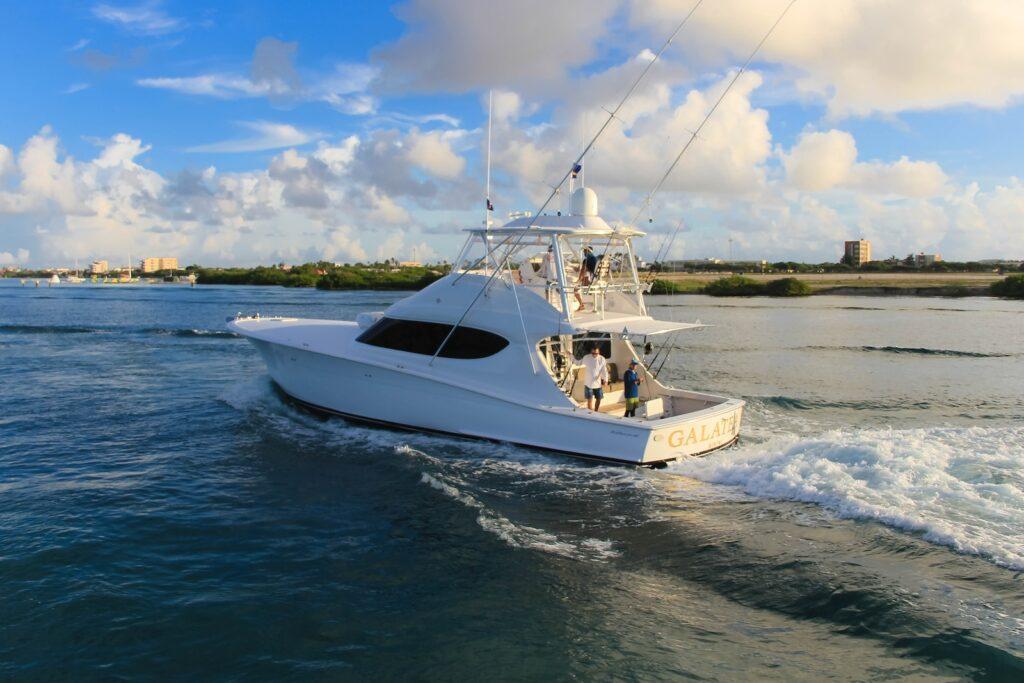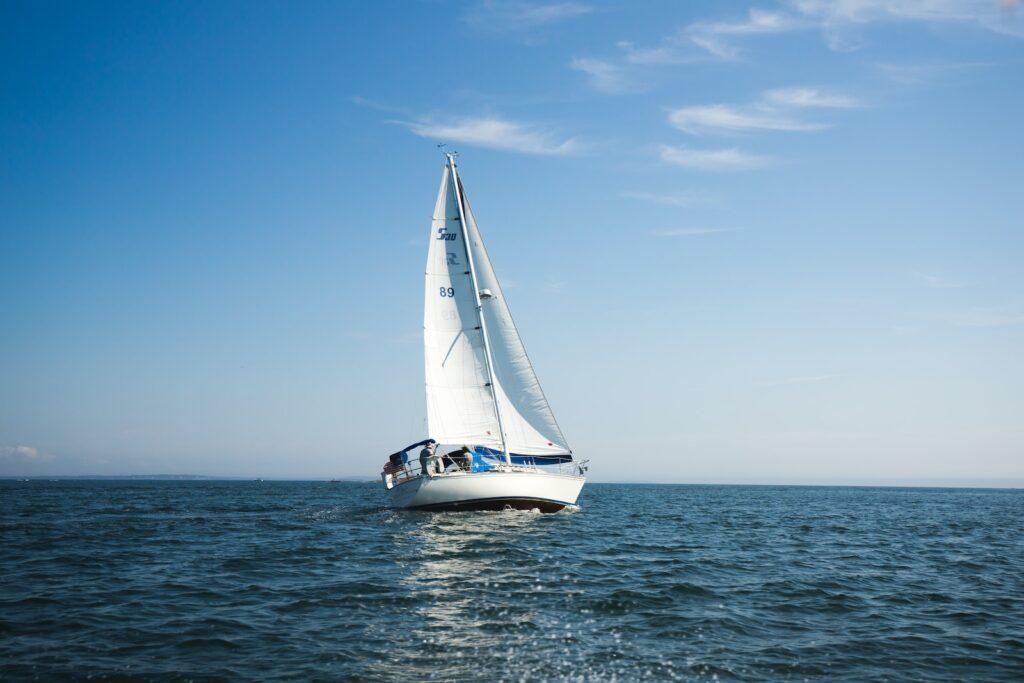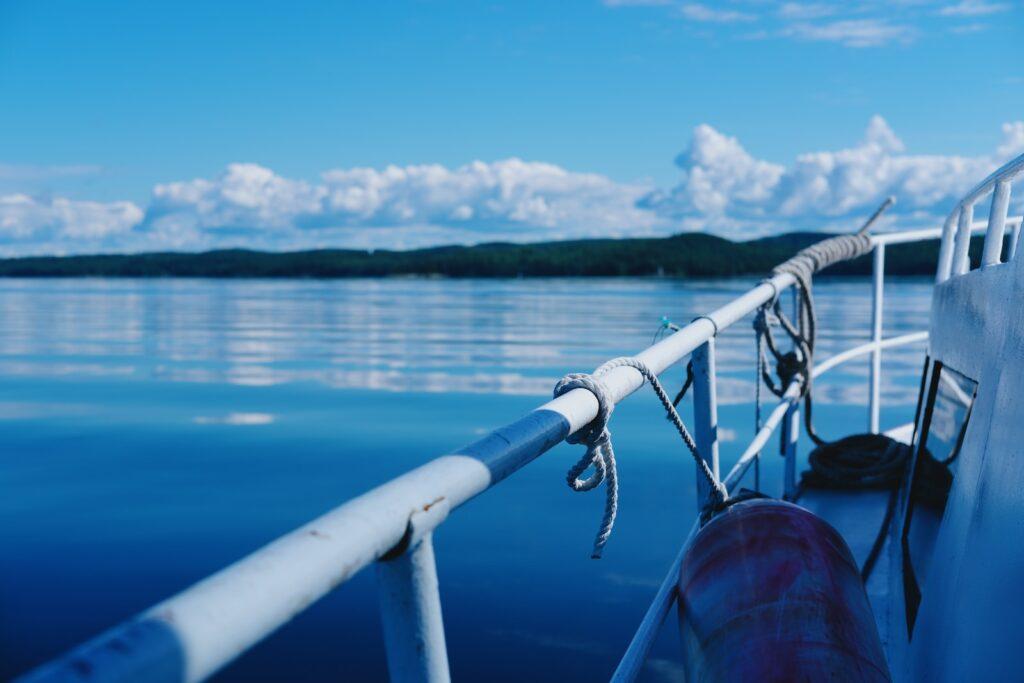Where Onboard a Boat is the Transom Located
The transom is an important part of a boat, as it is the area that provides structural support for the hull. It is also the component of the boat that connects the hull to the stern. The transom is typically located at the back of the boat, and its location is important for a variety of reasons. In this article, we will explore where the transom is located onboard a boat, what its purpose is, and how its location affects the boat’s performance and stability.
Where Onboard a Boat is the Transom Located
The transom is the rear wall of a boat, located at the stern (back) of the vessel. It is the structural boundary between the hull of the boat and the stern. The transom is typically vertical, and can be made of wood, metal, or fiberglass. It serves as an attachment point for the motor, rudder, and other boat hardware.
- On the back of the boat
- At the widest part of the boat
- At the stern of the boat
- Above the waterline
- Below the deck line
- In the aft section of the boat
The transom is an important structural component of any boat. It is designed to be strong and rigid, and provides a mounting point for the motor, rudder, and other hardware. It also helps to protect the boat from water damage and provides additional buoyancy. The transom is often used as the base for the boat’s name or registration numbers. It is usually the last part of the boat that is visible when the boat is in the water, and can be an important part of the boat’s aesthetics.
The transom is the flat, vertical surface at the stern of a boat or vessel. It is the point where the hull and the stern meet and is typically made from a strong material such as steel or wood. Check where to mount a transducer to make it good. The transom’s primary purpose is to provide structural support to the hull and to connect the hull to the stern. It also helps to protect the boat from the water and keeps it afloat in rough conditions.

Where is the Transom Located?
The transom is typically located at the back of the boat, near the stern. This location is important as it allows the hull to be supported by the transom and also allows the stern to be connected to the hull. Depending on the type of boat, the transom may also be located in the middle of the boat, just behind the cockpit.
How Does the Location of the Transom Affect Performance and Stability?
The location of the transom can have a significant impact on the performance and stability of a boat. When the transom is located at the back of the boat, it can help to increase the boat’s maneuverability and speed due to its increased surface area. However, this can also make the boat more prone to rocking when in rough seas. On the other hand, when the transom is located in the middle of the boat, it can help to increase the boat’s stability due to its decreased surface area. This can be beneficial in rough waters, as it reduces the rocking motion of the boat.
How Can the Location of the Transom Impact the Speed and Maneuverability of the Boat?
When the transom is located at the back of the boat, its larger surface area can help to increase the speed and maneuverability of the boat. This is due to the increased thrust provided by the larger surface area pushing against the water. Additionally, the larger surface area can also help to reduce the amount of drag on the boat, which can further increase the speed and maneuverability.
How Can the Location of the Transom Impact the Stability of the Boat?
When the transom is located in the middle of the boat, its smaller surface area can help to reduce the rocking motion of the boat in rough waters. This is due to the decreased amount of surface area pushing against the water, which reduces the amount of thrust generated. Additionally, the smaller surface area can also reduce the amount of drag on the boat, which further reduces the rocking motion.
What Other Factors Can Affect the Location of the Transom?
The location of the transom can also be affected by a variety of other factors, such as the type of boat, the size of the boat, and the type of propulsion system used. On smaller boats, the transom may be located further forward, as this allows the boat to be more maneuverable and to have a greater speed. On larger boats, the transom may be located further back, as this allows the boat to be more stable in rough waters. Type of propulsion system used may also affect the location of the transom. On boats that use an inboard engine, the transom may be located further back, as this allows the propeller to be closer to the stern.
How to Maintain the Transom?
In order to ensure the longevity and reliability of the transom, it is important to maintain it properly. This includes regularly inspecting the transom for any damage or corrosion, as well as cleaning the transom to remove any dirt or debris. It is also important to ensure that the transom is properly sealed to prevent water from entering the hull.
Inspecting the Transom
Inspecting the transom regularly is important to ensure that it is in good condition and to identify any potential problems. This includes looking for any cracks, holes, or other signs of corrosion or damage. Additionally, it is also important to check for any loose bolts or other fasteners.
Cleaning the Transom
Cleaning the transom regularly is important to remove any dirt, debris, or other contaminants that may be present. This can help to prevent corrosion and other damage to the transom. Cleaning the transom can also help to improve the boat’s performance, as it can reduce drag and provide a smoother surface for the water to flow over.
Sealing the Transom
Sealing the transom is important to prevent water from entering the hull, which can cause damage and corrosion. It is important to use a high-quality sealant that is designed for use on boats in order to ensure a proper seal. It is important to inspect the sealant regularly to ensure that it is not cracked or broken.
How Does the Location of the Transom Affect the Hull Design?

The location of the transom can also have an impact on the design of the hull. When the transom is located at the back of the boat, the hull typically has a more “V” shaped design, which allows for increased maneuverability and speed. On the other hand, when the transom is located in the middle of the boat, the hull typically has a more “U” shaped design, which allows for increased stability in rough waters. Location of the transom can also affect the type of hull that is used, such as a planing or non-planing hull.
What is a Planing Hull?
A planing hull is a type of hull that is designed to move quickly through the water. It is typically characterized by its V‑shaped design, which allows the boat to “plane” or skim across the surface of the water. This type of hull is typically used on boats that are designed for speed, such as racing boats.
What is a Non-Planing Hull?
A non-planing hull is a type of hull that is designed to move slowly through the water. It is typically characterized by its U‑shaped design, which allows the boat to move more slowly and to be more stable in rough waters. This type of hull is typically used on boats that are designed for stability, such as fishing boats.
How Can the Location of the Transom Affect the Hull Design?
The location of the transom can have an impact on the type of hull that is used. When the transom is located at the back of the boat, it typically requires the use of a planing hull, as this allows the boat to move quickly through the water. On the other hand, when the transom is located in the middle of the boat, it typically requires the use of a non-planing hull, as this allows the boat to be more stable in rough waters.
Conclusion
The transom is an important part of a boat, as it provides structural support for the hull and connects the hull to the stern. It is typically located at the back of the boat, near the stern, but its location can be affected by a variety of factors, such as the type of boat, the size of the boat, and the type of propulsion system used. In order to ensure the longevity and reliability of the transom, it is important to maintain it properly, including regularly inspecting it, cleaning it, and ensuring that it is properly sealed. By properly maintaining the transom, it is possible to ensure that the boat will perform optimally and remain stable in rough waters.

